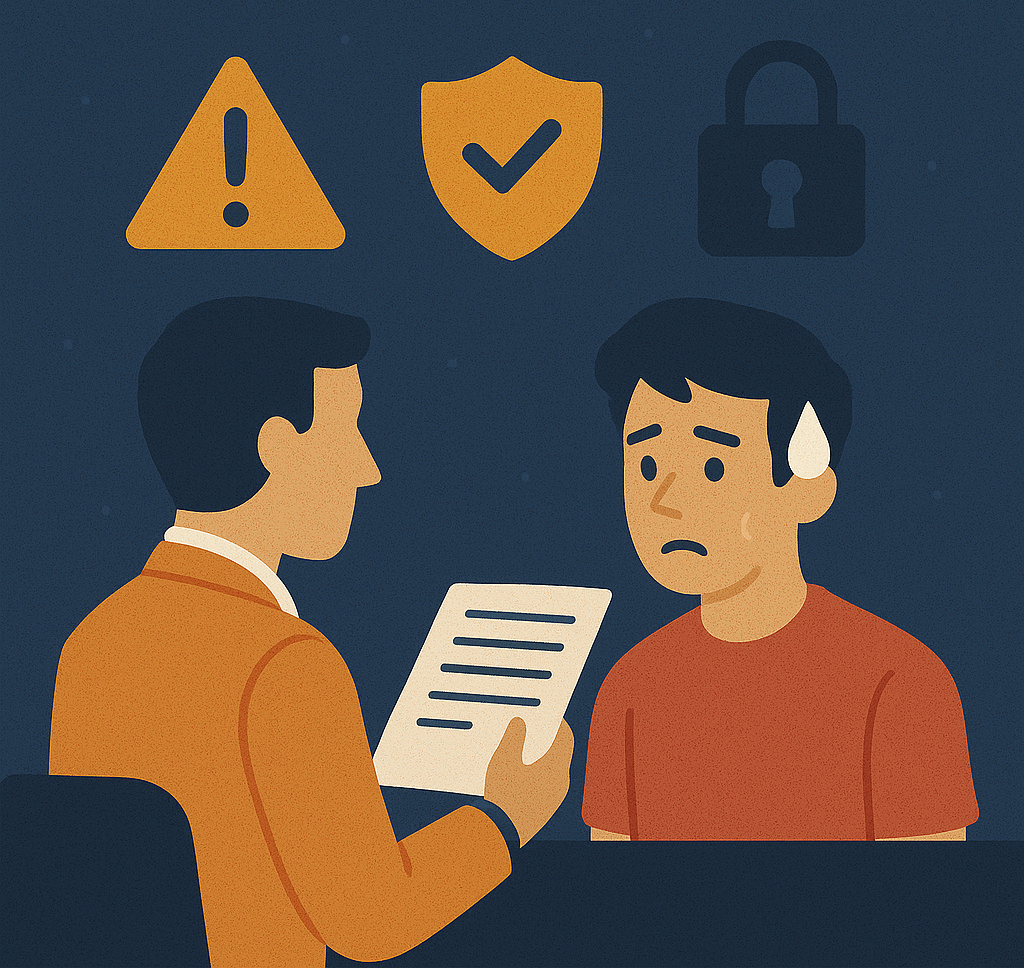In today’s digital landscape, applications have become the primary interface between organizations and their users. As applications grow increasingly complex and interconnected, they also become attractive targets for malicious actors. Application security focuses on identifying, fixing, and preventing security vulnerabilities within software applications throughout their entire lifecycle. This guide explores key application security concepts and best practices to help organizations build and maintain secure applications.
Want to test your application security knowledge before diving in? Take our Application Security Quiz to assess your current understanding and identify areas for improvement.
Core Application Security Concepts
1. Secure Development Lifecycle (SDLC)
The Secure Development Lifecycle integrates security practices throughout all phases of software development, from planning to deployment and maintenance.
Key components:
- Security requirements gathering: Defining security needs early in the planning phase
- Threat modeling: Identifying potential threats and vulnerabilities
- Secure coding practices: Following established guidelines to avoid common vulnerabilities
- Security testing: Regular assessment for weaknesses
- Security reviews: Expert evaluation of code and architecture
- Incident response planning: Procedures for handling security breaches
2. Principle of Least Privilege
Similar to network security, this principle advocates granting applications and their components only the minimum access rights necessary to function properly. By restricting permissions, organizations can limit the potential damage from compromised components.
Implementation strategies:
- Minimize use of elevated privileges in application code
- Implement proper access control mechanisms
- Use service accounts with limited permissions
- Regularly review and adjust access permissions
3. Defense in Depth
This layered security approach implements multiple defensive mechanisms to protect applications. If one security control fails, additional layers provide backup protection.
Application-specific layers:
- Input validation
- Authentication and authorization
- Encryption
- Error handling
- Logging and monitoring
- Web Application Firewalls (WAF)
4. Attack Surface Reduction
Minimizing the points where an application might be vulnerable to attack is a fundamental security concept. By reducing unnecessary functionality and exposure, organizations can decrease opportunities for exploitation.
Reduction techniques:
- Disable or remove unnecessary features and services
- Minimize third-party components and dependencies
- Implement proper network segmentation
- Use allowlisting for APIs and services
- Close unused ports and endpoints
Common Application Security Vulnerabilities
1. OWASP Top 10
The Open Web Application Security Project (OWASP) Top 10 represents the most critical security risks to web applications. Understanding these vulnerabilities is essential for effective application security:
- Broken Access Control: Improperly implemented restrictions on what authenticated users can do
- Cryptographic Failures: Failures related to cryptography, often leading to sensitive data exposure
- Injection: Command injection vulnerabilities like SQL, NoSQL, OS, and LDAP injection
- Insecure Design: Security flaws in the design and architecture of an application
- Security Misconfiguration: Improper implementation of security controls
- Vulnerable and Outdated Components: Using components with known vulnerabilities
- Identification and Authentication Failures: Weaknesses in identity verification mechanisms
- Software and Data Integrity Failures: Code and data integrity verification issues
- Security Logging and Monitoring Failures: Insufficient detection and response capabilities
- Server-Side Request Forgery (SSRF): Forcing a server to make unauthorized requests
2. API Security Vulnerabilities
As APIs become the backbone of modern applications, they introduce specific security challenges:
- Broken object-level authorization: Improper access controls on API endpoints
- Broken authentication: Flaws in authentication mechanisms
- Excessive data exposure: Returning more data than necessary
- Lack of resources and rate limiting: No protection against abuse
- Broken function-level authorization: Allowing unauthorized access to functionality
- Mass assignment: Allowing modification of object properties that should be protected
3. Mobile Application Vulnerabilities
Mobile applications face unique security challenges:
- Insecure data storage: Sensitive data stored in accessible locations
- Insecure communication: Data transmitted over insecure channels
- Weak server-side controls: Backend vulnerabilities affecting mobile clients
- Client-side injection: Vulnerabilities allowing code execution on mobile devices
- Poor authorization and authentication: Weak identity verification mechanisms
- Improper platform usage: Not following platform-specific security best practices
- Code quality issues: Programming flaws leading to security vulnerabilities
Application Security Best Practices
1. Secure Coding Practices
Implementing secure coding standards helps prevent many common vulnerabilities at the source.
Key practices:
- Input validation: Validate all input data for format, length, range, and type
- Output encoding: Properly encode data before displaying it to users
- Parameterized queries: Use prepared statements for database operations
- Memory management: Handle memory allocation and deallocation safely
- Error handling: Implement proper error handling without revealing sensitive information
- Dependency management: Regular updating of libraries and frameworks
2. Authentication and Authorization
Robust identity and access management is fundamental to application security.
Implementation guidelines:
- Implement multi-factor authentication (MFA)
- Use secure password storage with strong hashing algorithms
- Apply the principle of least privilege for user roles
- Implement strong session management
- Use OAuth 2.0 and OpenID Connect for federated authentication
- Regularly audit access controls and permissions
3. Encryption and Data Protection
Protecting sensitive data through encryption is essential for application security.
Implementation strategies:
- Encrypt data in transit using TLS 1.3
- Implement proper key management procedures
- Use strong encryption algorithms for data at rest
- Protect API keys and credentials
- Implement data classification and handling policies
- Consider data minimization principles
4. Security Testing
Regular security testing helps identify and remediate vulnerabilities before they can be exploited.
Testing approaches:
- Static Application Security Testing (SAST): Analyzing source code for security vulnerabilities
- Dynamic Application Security Testing (DAST): Testing running applications for vulnerabilities
- Interactive Application Security Testing (IAST): Combining SAST and DAST approaches
- Software Composition Analysis (SCA): Identifying vulnerabilities in third-party components
- Penetration testing: Simulating attacks to identify exploitable vulnerabilities
- Fuzz testing: Providing invalid, unexpected, or random data to find issues
5. DevSecOps Integration
Integrating security into DevOps processes (DevSecOps) ensures security is addressed throughout the entire application lifecycle.
Implementation strategies:
- Automate security testing in CI/CD pipelines
- Implement security gates before deployment
- Use infrastructure as code (IaC) security scanning
- Conduct security monitoring and observability
- Create feedback loops for continuous improvement
- Foster security culture within development teams
6. Third-Party Component Management
Managing the security of third-party components and dependencies is crucial for application security.
Best practices:
- Maintain an accurate inventory of all dependencies
- Regularly update components to address security vulnerabilities
- Use software composition analysis (SCA) tools
- Establish policies for evaluating new dependencies
- Have contingency plans for vulnerable components
- Consider legal and licensing implications
7. API Security
Securing APIs requires specific attention given their critical role in modern applications.
Security measures:
- Implement strong authentication and authorization
- Use rate limiting and throttling
- Validate all input and implement proper error handling
- Apply the principle of least privilege
- Use transport layer security (TLS)
- Implement proper logging and monitoring
- Consider using an API gateway
8. Security Monitoring and Incident Response
Continuous monitoring and having established incident response procedures are essential for maintaining application security.
Implementation strategies:
- Implement comprehensive logging for security-relevant events
- Set up real-time monitoring and alerting
- Develop and practice incident response procedures
- Perform root cause analysis after incidents
- Share knowledge and update defenses based on incidents
- Consider security information and event management (SIEM) solutions
Emerging Application Security Challenges and Solutions
1. Cloud-Native Application Security
As applications move to cloud-native architectures, security approaches must adapt.
Security considerations:
- Container security
- Serverless function security
- Service mesh protection
- Infrastructure as Code (IaC) security
- Cloud security posture management
- Shared responsibility model understanding
2. Machine Learning and AI Security
Applications incorporating AI/ML components face unique security challenges.
Security measures:
- Training data protection
- Model security and integrity
- Adversarial attack mitigation
- Explainability and transparency
- Ethical considerations
- Regular retraining and validation
3. Supply Chain Security
Recent high-profile attacks highlight the importance of securing the software supply chain.
Security strategies:
- Verify the integrity of software components
- Implement software bill of materials (SBOM)
- Use signed builds and packages
- Secure CI/CD environments
- Conduct vendor security assessments
- Monitor for compromised packages
Conclusion
Application security requires a comprehensive, multi-layered approach addressing both technical and organizational aspects. By implementing the concepts and practices outlined in this guide, organizations can significantly improve their application security posture and protect against evolving threats.
Remember that application security is not a one-time implementation but an ongoing process requiring continuous assessment, adaptation, and improvement. As threats evolve, so too must security strategies and controls. Through vigilance, proper security integration in the development lifecycle, and adoption of security as a shared responsibility, organizations can build and maintain secure applications in an increasingly complex threat landscape.
Ready to test your understanding of application security concepts? Take our comprehensive Application Security Quiz to assess your knowledge and identify areas for further study.
For more cybersecurity resources and information, be sure to check out our other guides on InfoSecQuiz.com, where you can also test your knowledge with our interactive security quizzes.


